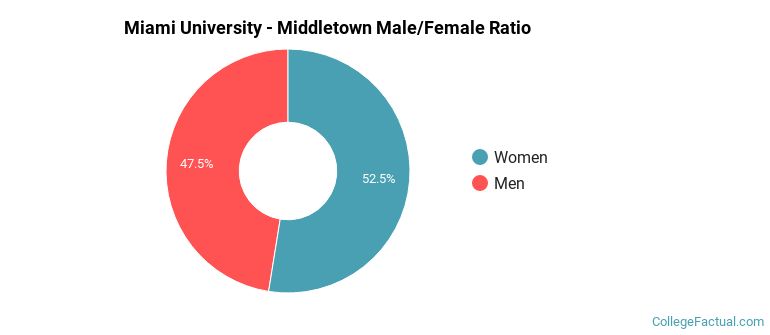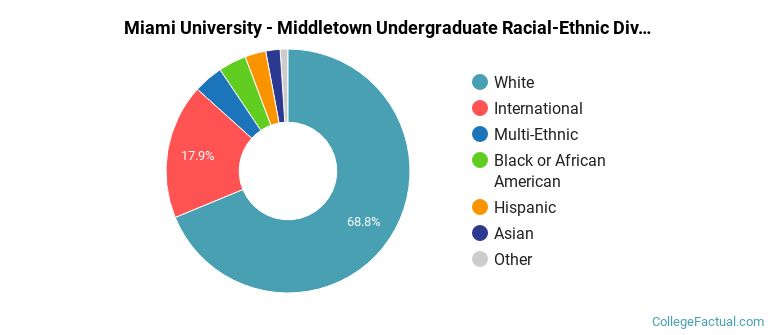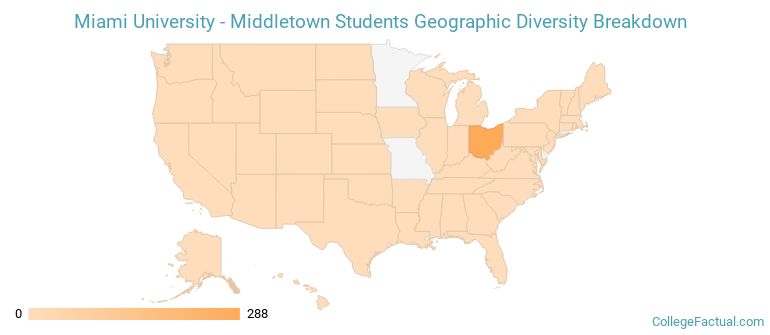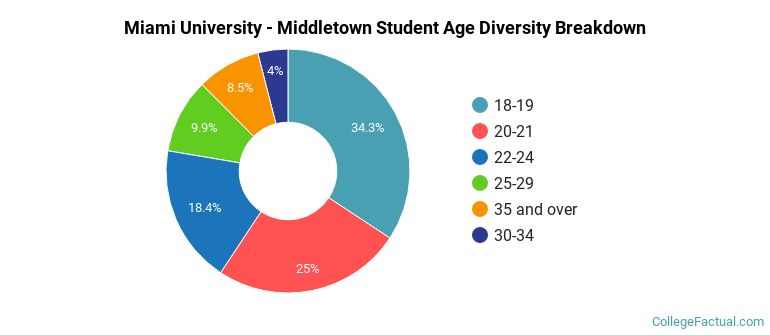 by our College Data Analytics Team
by our College Data Analytics TeamMiami University - Middletown total enrollment is approximately 1,640 students.
Male/Female Breakdown of Undergraduates
The full-time Miami University - Middletown undergraduate population is made up of 51% women, and 49% men.

For the gender breakdown for all students, go here.
Miami University - Middletown Racial/Ethnic Breakdown of Undergraduates

| Race/Ethnicity | Number |
|---|---|
| White | 686 |
| International | 259 |
| Multi-Ethnic | 44 |
| Hispanic | 32 |
| Black or African American | 30 |
| Asian | 20 |
| Unknown | 16 |
| Native Hawaiian or Pacific Islander | 1 |
See racial/ethnic breakdown for all students.

| Race/Ethnicity | Number |
|---|---|
| White | 1,136 |
| International | 268 |
| Multi-Ethnic | 67 |
| Black or African American | 58 |
| Hispanic | 52 |
| Asian | 30 |
| Unknown | 23 |
| Native Hawaiian or Pacific Islander | 1 |

There are approximately 875 female students and 765 male students at Miami University - Middletown.
Miami University - Middletown ranks 1,967 out of 2,183 when it comes to geographic diversity.
0.35% of Miami University - Middletown students come from out of state, and 3.99% come from out of the country.

The undergraduate student body is split among 2 states (may include Washington D.C.). Click on the map for more detail.

| State | Amount |
|---|---|
| Ohio | 288 |
| Indiana | 1 |
| Alaska | 0 |
| Alabama | 0 |
| Arkansas | 0 |
Learn more about international students at Miami University - Middletown.
A traditional college student is defined as being between the ages of 18-21. At Miami University - Middletown, 48.96% of students fall into that category, compared to the national average of 60%.

| Student Age Group | Amount |
|---|---|
| 18-19 | 558 |
| 20-21 | 408 |
| 22-24 | 299 |
| 25-29 | 161 |
| 35 and over | 138 |
| 30-34 | 65 |
| Under 18 | 0 |
Footnotes
*The racial-ethnic minorities count is calculated by taking the total number of students and subtracting white students, international students, and students whose race/ethnicity was unknown. This number is then divided by the total number of students at the school to obtain the racial-ethnic minorities percentage.
References
Department of Homeland Security Citizenship and Immigration Services
Read College Factual's Diversity Ranking Methodology.